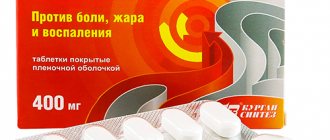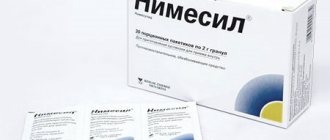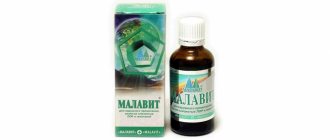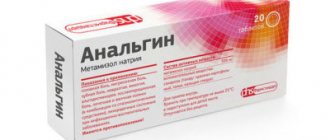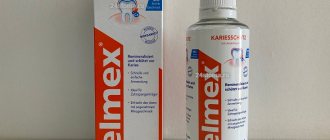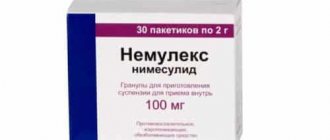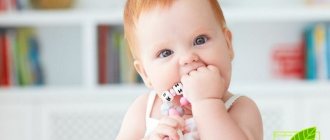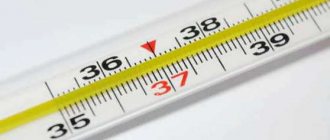What to do if your child has a fever? This question sooner or later arises in every parent who is concerned about the health of their child. But not all mothers and fathers know what temperature can and should be lowered. So, for example, in newborns and babies up to one year old the indicator is up to 37.5-38 degrees, which for us adults is considered elevated, and is the norm. The baby is one month old – does he have a fever? Reduce it only if it rises above 38-38.5.
As for older toddlers, for them this “threshold” is 39-39.5. If the thermometer shows a lower temperature, you should not knock it down. Remember that a child’s fever is an excellent opportunity for the body to fight the infection on its own. Give your baby the opportunity to boost his immunity!
How to reduce a child's temperature?
Now let’s talk about the medications that should definitely be in your first aid kit if a baby is growing up in the family. Thus, pediatricians prohibit the use of drugs such as:
- Aspirin;
- Analgin;
- Nise.
The baby can only be given medications that contain Paracetamol or Ibuprofen. Even if the child has no symptoms, they must be correctly calculated based on the baby’s weight and measured using a special syringe or measuring spoon. You should not use ordinary teaspoons for these purposes, and it is better to completely forget about the concept of “by eye”.
How to reduce a child's temperature?
Doctors advise using only one drug from the above - with Paracetamol or Ibuprofen in the composition. If the temperature drops poorly or does not drop at all, such medications can be alternated. But you can’t give your baby the combined drug Ibuklin.
Please note that it is not at all necessary to reduce the temperature to normal. It is enough just to knock it down a little for the baby’s well-being to improve at least a little. Don’t forget to feed your little one, because in case of high temperature the loss of fluid increases. Pediatricians say that babies need to drink 100 ml of water per 1 kg of weight.
What to do if your baby gets chickenpox?
Has your child caught chickenpox? Of course, this acute viral disease can also cause high fever. How to proceed in this case?
The most important thing is to choose an antipyretic drug for your baby. Under no circumstances should you use Nurofen. To combat high fever during chickenpox, medications containing Paracetamol are suitable.
What to do if your child has a fever?
Does your baby have a fever? Then you can’t hesitate - you need to urgently consult a doctor. Especially if it is accompanied by:
- rash;
- neck muscle tension;
- abdominal pain;
- vomiting.
But don’t panic: fever is typical for most common viral respiratory infections and high temperatures - about 40 degrees. This is how our body responds to infection. The pediatrician will simply examine the child and select the right treatment for him, taking into account the severity of the disease.
Teething process:
Most children have all their baby teeth by about 2.5 years of age. All children are different, but there is an approximate order and timing of the eruption of baby teeth:
- Months 6-10 – lower front teeth (central incisors)
- Months 8-12 – upper front teeth (central incisors)
- Months 9-13 - upper lateral incisors
- Months 10-16 – lower lateral incisors
- Months 13-19 – back teeth (first molars)
- Months 16-23 – fangs
- Months 25-33 – second molars
What temperature should be lowered in a child with influenza and ARVI?
High temperature forces the child's body to turn on its protective function. In this case, there may be a general deterioration in the form of malaise and headaches. The child becomes lethargic and whiny, which brings a lot of anxiety to parents. Before bringing down a child’s high temperature, you need to clarify significant nuances.
A slight increase in temperature does not lead to serious consequences and does not require any measures to be taken. Parents need to have reliable information about what temperature should be lowered. Improper actions can cause weakened immunity. There is a risk of developing possible complications and the disease may become protracted.
Cases when you need to bring down the temperature in children:
- 37.2-37.9°C (low-grade fever) – should be taken for newborns up to 2 months of age if indicated;
- 38.0-38.9°C (febrile) – antipyretics must be given in all cases;
- over 41.0°C (hyperthermic) - you need to call an ambulance if the drugs do not lower the readings on the thermometer.
It is necessary to call an ambulance if febrile spasms appear - this is intolerance to high temperature, an individual feature of the child’s body. This condition usually does not occur in children over 6 years of age (provided there are no pathologies in the central nervous system).
Chronic or acute diseases in cardiology, neurology or lung disease require lowering the temperature in children if the readings are above 38°C. Otherwise, complications from the heart, nervous system and respiratory organs cannot be ruled out.
If you have difficulty lowering your temperature, you should immediately seek medical help. If the thermometer has barely reached 37°C, and the child looks lethargic and his health is only getting worse, you should not expect a further increase in the readings on the thermometer.
How to help your baby teething
The arrival of a newborn in a family is an indescribable joy. Great relief comes when the period of infant colic passes. And as soon as moms and dads relax and begin to enjoy life, a new problem appears - teething. And it all starts all over again...
In order to somehow help their baby, parents are ready to do anything: buy it, apply it to the teeth, cover it up, drop it in, etc. During this period, advertising on TV fits very “successfully” - “Drops for teething.” Parents run to the pharmacy, give the child a miracle remedy, but there is no result. Another advertisement is “Teeting Gels.” Hurry to the pharmacy. But there was still no result.
STOP! In this situation you need to stop. Remember that people have been living on the planet for a long time. And children are constantly faced with teething. Yes, sometimes it brings discomfort, both to the baby and his entire family. But that's completely normal! You just have to be patient a little and you can forget about teething like a bad dream.
Medicines for teething
The first thing parents think about when faced with the problem of teething is how to help the baby? What products can I buy at the pharmacy? Let's look at all their diversity.
Gels with local anesthetics
At the moment, there are 2 painkillers contained in dental gels: benzocaine and lidocaine.
1. Benzocaine.
Benzocaine has been banned for use by the US Food and Drug Administration (FDA). The reason for the ban is toxicity and lack of safety. Products containing benzocaine can cause methemoglobinemia, the main symptoms of which are a gray-brown color of the skin, lips and nails, headache, shortness of breath, tachycardia, nausea and even death.
These symptoms may appear minutes to hours after using benzocaine.
2. Lidocaine.
This remedy can cause numbness in the throat and, consequently, impaired swallowing function. If the dosage is not observed, disturbances in the functioning of the cardiovascular system, convulsions, allergic reactions, anaphylactic shock and death occur.
Since 2014, lidocaine has been banned for use in children's teething by the American FDA.
Homeopathic gels
There seems to be nothing wrong with homeopathy - after all, there is no active ingredient in such preparations. And if children become calmer after them, then we can remember the placebo effect. They smeared the gums - the parents calmed down - the child calmed down.
However, there is still a catch. In 2016, a number of homeopathic dental medications were recalled due to the discovery of toxic concentrations of belladonna in these products. As a result of the use of these drugs, children experienced convulsions, difficulty breathing, and lethargy.
Herbal gels and anti-inflammatory agents
Theoretically, these drugs can be used, but we should not forget that they can be washed out of the oral cavity after just a few minutes. From this it is clear that the effect of them will not last long and the child will start crying again. At the same time, you need to remember about the likelihood of allergic reactions and individual intolerance.
What then to smear?
Nothing. The American and Canadian Dental Associations do not recommend any gels for use in children during teething.
How parents can help their baby:
1. Give your child pre-cooled rubber or silicone teethers. If they contain liquid inside, they should be chilled in the refrigerator rather than the freezer. When cleaning teethers, do not boil them, as high temperatures can damage the plastic.
2. Offer your baby teething toys with a ribbed surface made of silicone or latex.
3. If the child has already learned to eat solid foods, offer him chilled pieces of fruits and vegetables, as well as dried fruits. This is a good way to distract your child from painful sensations. The main thing is to be close to the child at this time and make sure that he does not choke.
4. Offer your breast more often (if breastfeeding). The baby calms down thanks to the action of several factors at once: massage of the gums, proximity to the mother and the soothing effect of the milk itself.
5. Give chilled water from a sippy cup or bottle (suitable for children over 6 months).
6. Massage the baby’s gums with clean fingers or special silicone fingertips.
7. Just be there during this difficult period, hug, hold, stroke more often and try to distract.
8. If pain is severe, give your baby painkillers (you need to consult your pediatrician!). Children's Nurofen or Paracetamol will help relieve pain. The dosage is calculated based on the child's weight.
9. The American Academy of Pediatrics gives advice that is rather unusual for a Russian person: let your child chew wet rags or socks that have been pre-chilled for 10-15 minutes in the refrigerator.
10. Constantly wipe excess saliva from your baby's lips and chin. This will prevent irritation and thereby ease the baby’s suffering. Additionally, you can apply a neutral baby cream to the mouth area.
Do not worry. After all the “torment” the teeth will finally appear. And now your task is to keep them clean and healthy. Solemnly hand your baby his first toothbrush and baby toothpaste (0+), and feel free to brush your teeth morning and evening.
How to properly lower the temperature at home?
Effective folk ways to reduce fever without medications in children:
- A drink made from cranberries is a unique diaphoretic that reduces fever. The berry is useful for containing vitamins and accelerates the elimination of decay products.
- Chamomile tea is an excellent anti-inflammatory remedy. To prepare the infusion, pour a tablespoon of chamomile into a glass of boiling water, let it brew for 2 hours, drink up to 5 times a day.
- Elderberry decoction effectively helps reduce fever. It is enough to take 50 g of elderberry and pour boiling water (200 ml) over it.
- Linden tea – gives excellent results when consumed with honey. The child will sweat profusely, which will reduce body temperature due to the evaporation of excess moisture from the skin.
You can wipe the child's body with a terry towel moistened with water at room temperature. Applying a heating pad with ice to large vessels helps. Wrapping in a damp towel or sheet is also recommended.
Medications
Before lowering your child’s temperature at home with medications, you must carefully study the instructions for use. Classic drugs can be bought in pharmacies, choose the dosage and form that is needed and choose the best option depending on age and indications.
The baby can only be given medications that contain paracetamol or ibuprofen. Paracetamol is contained in Panadol and Cefekon, ibuprofen is found in Nurofen and Ibufen. For babies, these products are available in the form of syrup, which, unlike tablets, has a sweet taste and is more convenient to dose.
Standard antipyretic drugs:
- "Panadol". Suitable for use on infants. The drug is indicated for colds, teething, otitis media, whooping cough and other infections. Prescribed to children aged 3 months and older in an individual dosage.
- "Efferalgan." Used as an analgesic and antipyretic. Rectal suppositories can be used to relieve fever in infants 3 months and older. Unlike medications taken orally, it does not cause vomiting and does not affect the gastrointestinal tract.
- "Ibufen." Has analgesic and antipyretic properties. In childhood, this drug is used in a dosage calculated depending on the weight and age of the child.
- "Paracetamol". An effective antipyretic and analgesic. It can be alternated with ibuprofen. If there is vomiting, you can use suppositories (suppositories).
- "Cefekon D". Available in the form of suppositories, recommended for use from 3 months to 12 years. Important advantages of the drug are its low cost and versatility. In addition to reducing temperature, it has an anti-inflammatory and analgesic effect.
A child's body can react to different medications differently, so you should experiment in practice to determine a more effective remedy, based on the pediatrician's recommendations.
When taking medications, you should follow a number of rules:
1. You cannot give several medications at the same time.
2. Drugs can be alternated, but the interval between taking medications should be 2-3 hours.
3. It is recommended to dose syrups using a measuring spoon or syringe, which are included in the kit.
4. If a child 1 year or younger is sick, it is recommended to use suppositories. Older children take tablets and capsules easily. Without a doctor's recommendation, antipyretic drugs can be prescribed to children for no longer than 3 days in a row and no more than 4 times a day.
5. Parents must understand that high body temperature is just a symptom indicating a specific disease. Taking antipyretics is not a treatment; it is only necessary to alleviate the child’s condition before the doctor arrives.
Pharmacological properties
Nurofen for children - suspension from 3 months to 12 years, does not contain sugar, alcohol and dyes, pleasant taste of orange and strawberry.
Fever, cough, ear pain, teething pain - all this often happens in the first years of a child's life.
The syrup has a pleasant strawberry or orange flavor, does not contain sugar or dyes, and each bottle is equipped with a convenient measuring syringe. Most mothers trust Nurofen for children.
The effect of Nurofen suspension for children begins in 15 minutes and lasts up to 8 hours.
Helps cope with fever after vaccination.
It has analgesic, antipyretic and anti-inflammatory effects.
The mechanism of action of ibuprofen, a derivative of propionic acid, is due to inhibition of the synthesis of prostaglandins - mediators of pain, inflammation and hyperthermic reaction. Indiscriminately blocks COX-1 and COX-2, as a result of which it inhibits the synthesis of prostaglandins. In addition, ibuprofen reversibly inhibits platelet aggregation. The analgesic effect is most pronounced for inflammatory pain. The effect of the drug lasts up to 8 hours.
Pharmacokinetics
Absorption is high, quickly and almost completely absorbed from the gastrointestinal tract. After taking the drug on an empty stomach in adults, ibuprofen is detected in the blood plasma after 15 minutes, the Cmax of ibuprofen in the blood plasma is reached after 60 minutes. Taking the drug with food can increase the time to reach Cmax by up to 1-2 hours.
Binding to blood plasma proteins is 90%. Slowly penetrates into the joint cavity, lingers in the synovial fluid, creating higher concentrations in it than in the blood plasma.
In limited studies, ibuprofen has been found in breast milk at very low concentrations.
After absorption, about 60% of the pharmacologically inactive R-form is slowly transformed into the active S-form. Metabolized in the liver.
It is excreted by the kidneys (unchanged - no more than 1%) and, to a lesser extent, with bile. T1/2 – 2 hours.
What should you not give to children?
Reducing a child’s temperature is not difficult - today there are many drugs on sale that relieve fever in a short time. But first you need to consult with a qualified pediatrician, because self-medication can affect the baby's health.
If the readings do not exceed 38.5°C, there is no need to lower the temperature, because The body independently produces antibodies that help destroy viruses - so to speak, it fights the infection.
Medicines that are not recommended for children:
- amidopyrine, antipyrine and phenacetin (many side effects);
- acetylsalicylic acid (reduce the number of platelets, causing bleeding, allergic reactions, etc.);
- analgin and other drugs containing metamizole sodium as an active substance (side effects occur, such as suppression of hematopoiesis, severe allergic reactions, etc.).
These drugs are not recommended for use without the advice of a doctor. When you need to bring down the temperature, give preference to another medicine.
Nurofen for children Suspension, 200 ml, 100/5 mg/ml, for oral administration, for children, strawberry
Interaction with other drugs
The simultaneous use of ibuprofen with the following LSAs: acetylsalicylic acid should be avoided: with the exception of low doses of acetylsalicylic acid (no more than 75 mg/day) prescribed by a doctor, since combined use may increase the risk of side effects. With simultaneous use, ibuprofen reduces the anti-inflammatory and antiplatelet effect of acetylsalicylic acid (an increase in the incidence of acute coronary insufficiency in patients receiving small doses of acetylsalicylic acid as an antiplatelet agent is possible after starting ibuprofen). Other NSAIDs, incl. selective COX-2 inhibitors: the simultaneous use of two or more drugs from the NSAID group should be avoided due to a possible increase in the risk of side effects. Use with caution simultaneously with the following drugs Anticoagulants and thrombolytic drugs: NSAIDs may enhance the effect of anticoagulants, in particular warfarin and thrombolytic drugs drugs. Antihypertensive drugs (ACE inhibitors and angiotensin II antagonists) and diuretics: NSAIDs may reduce the effectiveness of drugs in these groups. Diuretics and ACE inhibitors may increase the nephrotoxicity of NSAIDs. GCS: increased risk of gastrointestinal ulcers and gastrointestinal bleeding. Antiplatelet agents and SSRIs: increased risk of gastrointestinal bleeding. Cardiac glycosides: simultaneous administration of NSAIDs and cardiac glycosides may lead to worsening heart failure, a decrease in glomerular filtration rate and an increase in the concentration of cardiac glycosides in the blood plasma. Lithium preparations: there is evidence of the likelihood of an increase in the concentration of lithium in the blood plasma during the use of NSAIDs. Methotrexate: there is evidence of the likelihood of an increase in the concentration of methotrexate in the blood plasma during the use of NSAIDs. Cyclosporine: increased risk of nephrotoxicity when NSAIDs and cyclosporine are co-administered. Mifepristone: NSAIDs should be started no earlier than 8-12 days after taking mifepristone, as NSAIDs may reduce the effectiveness of mifepristone. Tacrolimus: when NSAIDs and tacrolimus are co-administered, there may be an increased risk of nephrotoxicity. Zidovudine : Concomitant use of NSAIDs and zidovudine may lead to increased hematotoxicity. There is evidence of an increased risk of hemarthrosis and hematomas in HIV-positive patients with hemophilia who received joint treatment with zidovudine and ibuprofen. Quinolone antibiotics: in patients receiving joint treatment with NSAIDs and quinolone antibiotics, there may be an increased risk of seizures.
Is it necessary to bring down a child’s temperature to 36.6?
If, after using antipyretics, the readings decrease by 0.5°C within an hour, then the process is normal. Do not aim to reach 36.6°C immediately. This can cause serious overload of the child’s body, which can lead to a deterioration in overall well-being.
The ideal temperature would be 37-37.5 degrees. After some time, a jump may occur again. This occurs because the active component of the medicine is excreted from the body and ceases its effect. If several hours have passed after taking the drug, you can give the child another dose. It is very important to observe time intervals between doses and monitor temperature readings.
With an effective fight of the immune system against pathogenic microbes and with a competent approach to treatment, recovery, as a rule, is 3-5 days.
Directions for use and dosage
Nurofen for children is a drug developed specifically for children. The drug is intended for short-term use only. The drug is taken orally. Patients with hypersensitivity of the stomach are recommended to take the drug with meals. The dose depends on the age and body weight of the child. For fever and pain, the maximum daily dose should not exceed 30 mg/kg body weight with intervals between doses of the drug of 6-8 hours. The indicated dose should not be exceeded. The duration of treatment is no more than 3 days. If, when using the drug for 24 hours (in children aged 3-5 months) or within 3 days (in children aged 6 months and older), symptoms persist or worsen, you should stop treatment and consult a doctor. For fever after immunization in children under 6 months of age, the drug is prescribed at a dose of 50 mg (2.5 ml); if necessary, after 6 hours the drug can be re-administered at the same dose. Do not use more than 100 mg (5 ml) within 24 hours. Rules for using a measuring syringe The suspension should be shaken thoroughly before use. For precise dosing of the suspension, a measuring syringe is included with the bottle. 5 ml of the drug contains 100 mg of ibuprofen or 20 mg of ibuprofen in 1 ml. 1. Insert the syringe tightly into the neck of the bottle. 2. Turn the bottle upside down and smoothly pull the plunger down, drawing the suspension into the syringe to the desired mark. 3. Return the bottle to its original position and remove the syringe, carefully turning it. 4. Place the syringe in the child’s mouth and slowly press the plunger, smoothly releasing the suspension. After use, rinse the syringe in warm water and dry it out of the reach of the child.
How to help a child’s body fight infection?
Regardless of whether you follow the recommendations on what temperature to lower in children, you must take care to create the necessary conditions for the patient. All family members should improve the quality of personal hygiene: wash their hands, wear disposable gauze bandages, etc. You also need to provide the child with separate cutlery and dishes.
Recommendations for a speedy recovery:
1. A sick child must remain in bed.
2. It is necessary to ventilate the room in which the baby is located (the influenza virus and other microorganisms are concentrated in musty air).
3. Care should be taken to humidify the air (at the same time, the mucous membranes of the nose and larynx do not dry out; this improves local immunity and promotes well-being).
4. You should ensure that you drink plenty of fluids (virus breakdown products are eliminated through the kidneys, which reduces the load on the body).
5. The baby’s clothes should be light, preferably made from natural fabrics.
6. It is considered normal for a baby to have no appetite. You should avoid spices, citrus fruits, and dairy products, which can cause irritation of the gastric mucosa. A hot bath at a high temperature is not the most pleasant feeling, but cool (not cold) water can help normalize the indicators.
7. It is recommended to use the bath together with antipyretics, and not instead of them. You can also get some relief by applying a cool compress to your forehead.
